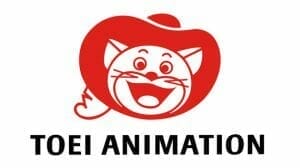 Yesterday, AnimeAnime.biz reported that Toei Animation saw record revenues and profits in the first fiscal quarter of this year. In the period ending June 30 2013, the company reported the following:
Yesterday, AnimeAnime.biz reported that Toei Animation saw record revenues and profits in the first fiscal quarter of this year. In the period ending June 30 2013, the company reported the following:
- 7.941 billion yen in overall revenues (13.6% increase year-over-year)
- 1.594 billion yen in net operating income (160.2% increase year-over-year)
- 1.84 billion yen in ordinary income (137.1% increase year-over-year)
Net income dropped 134.5% year-over-year to 1.161 billion yen, though the company’s overall profits still saw significant growth in comparison to the same period in 2012.
The company cites several key factors as contributors to their record revenues, including growth of their copyright business. However, strong video production and sales were primary drivers, with sales increasing 33.6% to 3.468 million yen (up from 2.595 million yen in 2012). Likewise, the company saw unprecedented profits from their theatrical and physical media divisions. Dragon Ball Z: Battle of Gods saw 2.9 billion yen in ticket sales, while One Piece Film Z saw strong retail performance with over 11,000 Blu-ray copies and 13,000 DVD copies sold in the first week on market. In addition, the company increased their presence in China, new distribution agreements leading to an additional 850 million yen in profits.
The company’s social gaming divisions declined year-over-year. In addition, copyright sales over the year are down 11.5% (not to be confused with the previously reported quarterly increase). While Dragon Ball Z remains a strong property worldwide, One Piece, Pretty Cure, Toriko and other similar titles saw overall declines domestically. One Piece saw growth in overseas markets like America and Europe, where profits rose to 382 million yen from 306 million yen. Toei forecasts 28.8% growth in the coming quarter.
Now, in plain English, this means that Toei’s record revenues were driven primarily by their video production and theatrical departments, with their theatrical division pulling in over 2.9 billion yen on Dragon Ball Z: Battle of the Gods alone. However, while properties like Dragon Ball and One Piece remain popular in the American and European markets, other heavy performers are seeing declines.
There are a few interesting take-aways from Toei’s statement. In particular, the strength of properties like Dragon Ball Z and One Piece should be taken as an encouraging sign to the casual observer. For example, One Piece, which was able to pull in 382 million yen ($3.9 million) in western markets, is showing signs of expansion. New customers are beginning to shift to the property, which creates a positive feedback loop. In the loop, new customers purchase the product, which causes a number of sneezers to share their reactions with their reactions, thus prompting further purchases from those who catch the idea virus. This leads to a continual repetition of the cycle and a growth in profits, as well as a growth in the brand. One could argue that the gains were made by increased purchases by the core market. However, this is a bit difficult to justify when one sees a nearly 30% increase in sales year-over-year. It’s more likely that the market is growing, thanks to the efforts of passionate customers and a product that they would deem remarkable.
Similarly, the declines of properties like Toriko and Precure in the domestic market could signify a fatigue with the brands or concepts. Both Pretty Cure and Toriko are long-running franchises, spanning several years and numerous seasons of production. Toriko’s had over 100 episodes produced, while Pretty Cure has had a new installment every year for the past ten years. On top of that, the property’s seen fifteen theatrical features, with three hitting in 2013 alone. The titles still perform admirably, with Precure’s latest movie raking in 1.05 billion yen ($1.06 million USD) at the box office and a Toriko film due in July. However, Toei promotes these properties heavily via video games, toys, and other media, so it’s easy to see why they’re showing concern for dips in popularity. Over-saturation can kill a property as quickly as its inverse. And, with profit magnets like this, Toei doesn’t want to kill the golden geese.
At this point, it’s still early in the fiscal year, Only one quarter has passed, and the company’s fortunes could tip in either direction in the following nine months. The results are incredible, though, and something we should both admire and applaud. Numbers like this are rare to see in today’s market, and encouraging for the market at large. Hopefully we’ll see similar growth from other companies as they release their reports.











